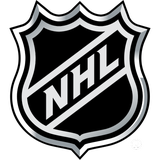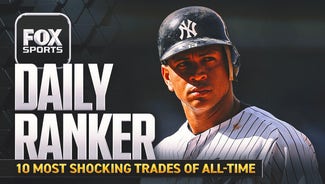
Penguins take it slowly with Crosby
Sidney Crosby looked pretty spry for a retired guy with both a fractured skull and brain tumor as he took the Consol Energy Center ice with the rest of his Pittsburgh Penguins teammates on Tuesday.
He wore a white helmet as the rest of Penguins donned black lids, an indication that hockey’s most bankable star hasn’t fully recovered from a concussion that's sidelined him the past nine months.
Let's repeat part of that, just for emphasis:
Hockey’s most bankable star hasn’t fully recovered from a concussion that has sidelined him for the past nine months.
A concussion. Not a fractured skull. Not a brain tumor. Not the numerous other rumored ailments that have filtered across the Internet since Crosby suffered blows to the head in successive games last January.
“I probably didn’t need this to happen to know things are followed pretty closely,” Crosby said after the Pens’ final practice stateside before their opener in Vancouver on Thursday. “You are always learning, though. I don’t know if I was surprised. There are always things that happen, and you just kind of react and learn. You take away everything you can from each situation, good or bad. I tried to do that over the last eight months.”
Crosby, 24, will be with the Penguins on the road for the team’s West Coast swing, although he said he likely won't be cleared to play while on the trip. He has been on the ice since July and he took part in training camp, but there’s no timetable on when he might be given the OK to return to game action.
Pat Brisson, Crosby’s agent, told FOXSports.com that the Pens’ captain could be back “in three weeks or three months.”
“At this point, I wouldn’t dare to guess,” Brisson added.
Crosby is a very private person, not unlike Mario Lemieux, the Hall of Famer player turned Penguins co-owner he lived with for five years in Pittsburgh. (Crosby didn’t make a single public statement from April through September.) The team’s public relations staff did what it could to control the message, but they were no match for social media as those — mostly outside the mainstream media — began to “report” why Crosby’s recovery was taking so long.
“With Twitter and Facebook, things got blown out of proportion,” Penguins forward Pascal Dupuis said. “Rumors on Sid are part of this social network, where people try to get as many followers as they can, I guess.”
Crosby largely tried to avoid the online rumors, but friends and teammates checked in with him often to see if the rumors were indeed true. Messages in to the Pens and Brisson also followed the various posts.
“There’s no way we had experienced anything close to this because of social media,” Brisson said. “As soon as something’s out there, we see it immediately. As soon as a tweet came out, within a few hours I was getting calls, texts and emails from not only the media.”
And the correspondence wasn’t coming just from fact-checking reporters as doctors, those offering alternative treatments and even brain injury survivors sought him out.
“Once it’s out there, there were a lot of people willing to share their thoughts and their opinions,” Brisson said.
The only opinions that matter at this point are those of Michael Collins, director of the UPMC Sports Medicine Concussion Program, chiropractor Ted Carrick and the Pens’ medical staff. They’re the ones who will give the go-ahead for Crosby to resume a career that has already included a Stanley Cup, an Olympic gold medal and the Hart Memorial Trophy, the NHL’s version of the MVP award.
“What’s unique about (Crosby’s concussion) is that it hit his equilibrium,” said Richard Ellenbogen, chairman of the department of neurological surgery at the University of Washington and member of the NFL’s Head, Neck and Spine Medical Committee. “What do you need more than anything else in hockey? You need your inner ear. His genius was his skating, but, unfortunately, what has affected him the most was his balance.”
Fellow neurosurgeon Robert Harbaugh, who was in Washington DC this week for the 2011 Congress of Neurological Surgeons, said Crosby may have been a victim of second-impact syndrome, a debilitating and sometimes fatal malady that occurs when a person receives significant blows to the head over a matter of days.
The shoulder of David Steckel, then a member of the Washington Capitals, caught Crosby in the head during the Winter Classic on Jan. 1. Four days later, Crosby was checked into the glass by Tampa Bay’s Victor Hedman. Crosby finished the game, but he hasn’t played since.
“We looked at if there was a sequence of events where the brain loses its ability to adapt for a period of time after a concussion,” said Harbaugh, who co-wrote one of the first research papers on second-impact syndrome. “It’s certainly rare, but it does happen. That’s one of the reasons why a person who suffers a concussion, he or she needs to come out of the game to be fully evaluated.”
Mitchel Berger, chairman of UC San Francisco’s department of neurological surgery, added that Crosby’s long recovery may have been in his genes.
“We are learning a person’s genotype can predispose an individual to developing a prolonged post-concussion syndrome,” Berger said.
The NHL has already seen several high-profile players — as well as other lesser names — retire early because of the debilitating effects of concussions, including Paul Kariya, Eric Lindros, Pat Lafontaine and Mike Richter. Boston’s Marc Savard, who hasn’t played since the middle of last season, will skip this season because of post-concussion syndrome, and his career is likely over.
Another reason why Crosby and his handlers are taking a measured approach to his return cropped up on Wednesday. Researchers from the Boston University Center for the Study of Traumatic Encephalopathy diagnosed Rick Martin, a member of Buffalo’s famed French Connection line, with Chronic Traumatic Encephalopathy (CTE), a debilitating brain disease that can lead to depression, memory loss and in some cases mirrors amyotrophic lateral sclerosis (ALS). Martin, who died in march of a heart attack at age 59, is the third former NHL player to be diagnosed with CTE and the first who wasn’t an enforcer.
Still reeling after the death of four current or recently retired enforcers over the past few months, the NHL is taking figurative hits to the head these days. It was the first major pro sport in North America to issue concussion guidelines, and those protocols were tightened late last season. Brendan Shanahan, the former NHL player now in charge of discipline for the league, has suspended nine players for illegal head hits this preseason.
Penguins coach Dan Bylsma already has the team’s other marquee forward, Evgeni Malkin, back from a knee injury that knocked him out of the lineup a month after Crosby went down. Even minus Crosby and Malkin, the Penguins still challenged for the division last season — losing out to the Philadelphia Flyers via a tiebreaker — and took Tampa Bay to seven games in the first round.
Although it appears he will get Crosby back sooner rather than later, Bylsma said he’s fine waiting.
“There’s no pressure,” Bylsma said. “We are not going to let Sidney Crosby or anybody else back if they’re not healthy. That’s the approach we always take. The good thing is that his rehab is back on schedule. He’s working hard and staying positive.”
Crosby said he would like to get rid of the white helmet or whatever other marker that tells his teammates to steer clear. But after months of rehab that were filled with a handful of setbacks, he’ll take being around his teammates, for now.
“I’m just happy to be out there,” Crosby said. “When the time comes, I’ll make sure I’m ready. To be honest, I’m just happy to be out there and working hard. For a long time, I wasn’t even able to do that.”


